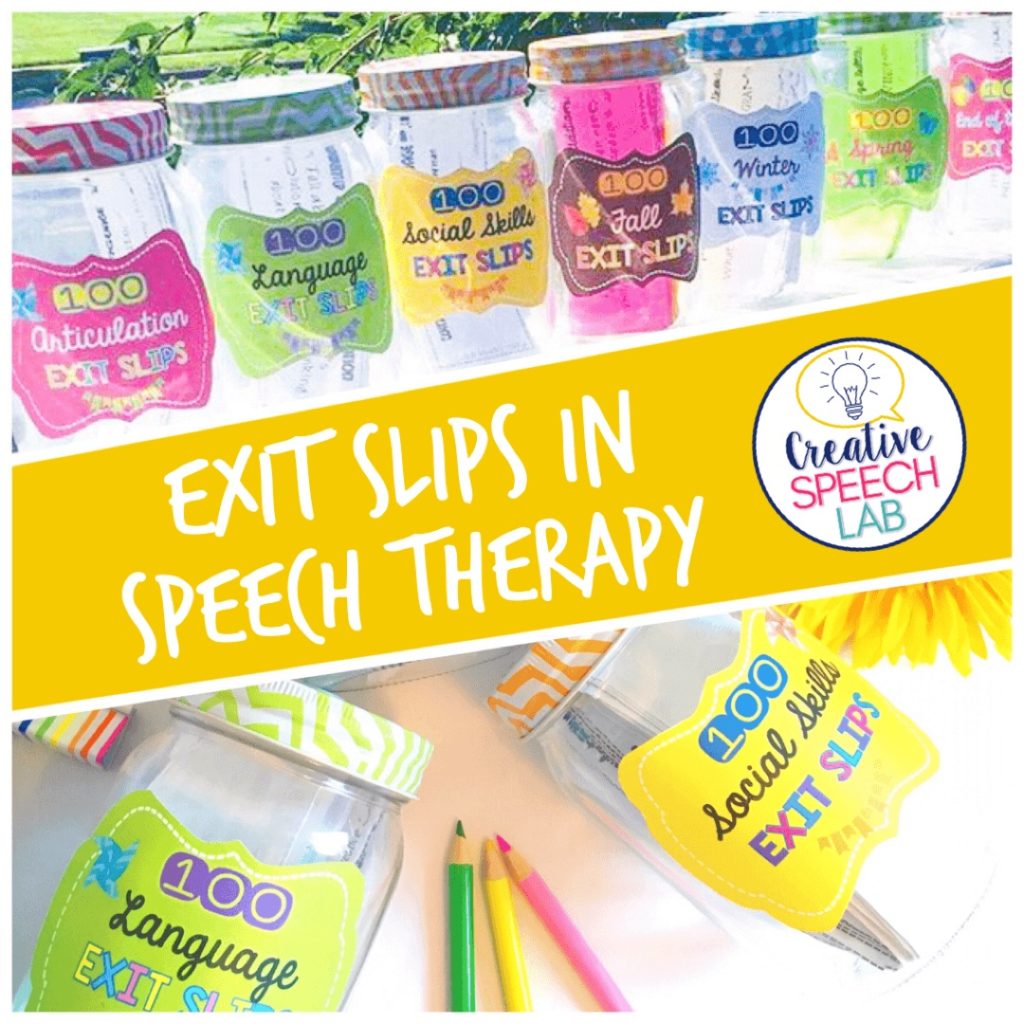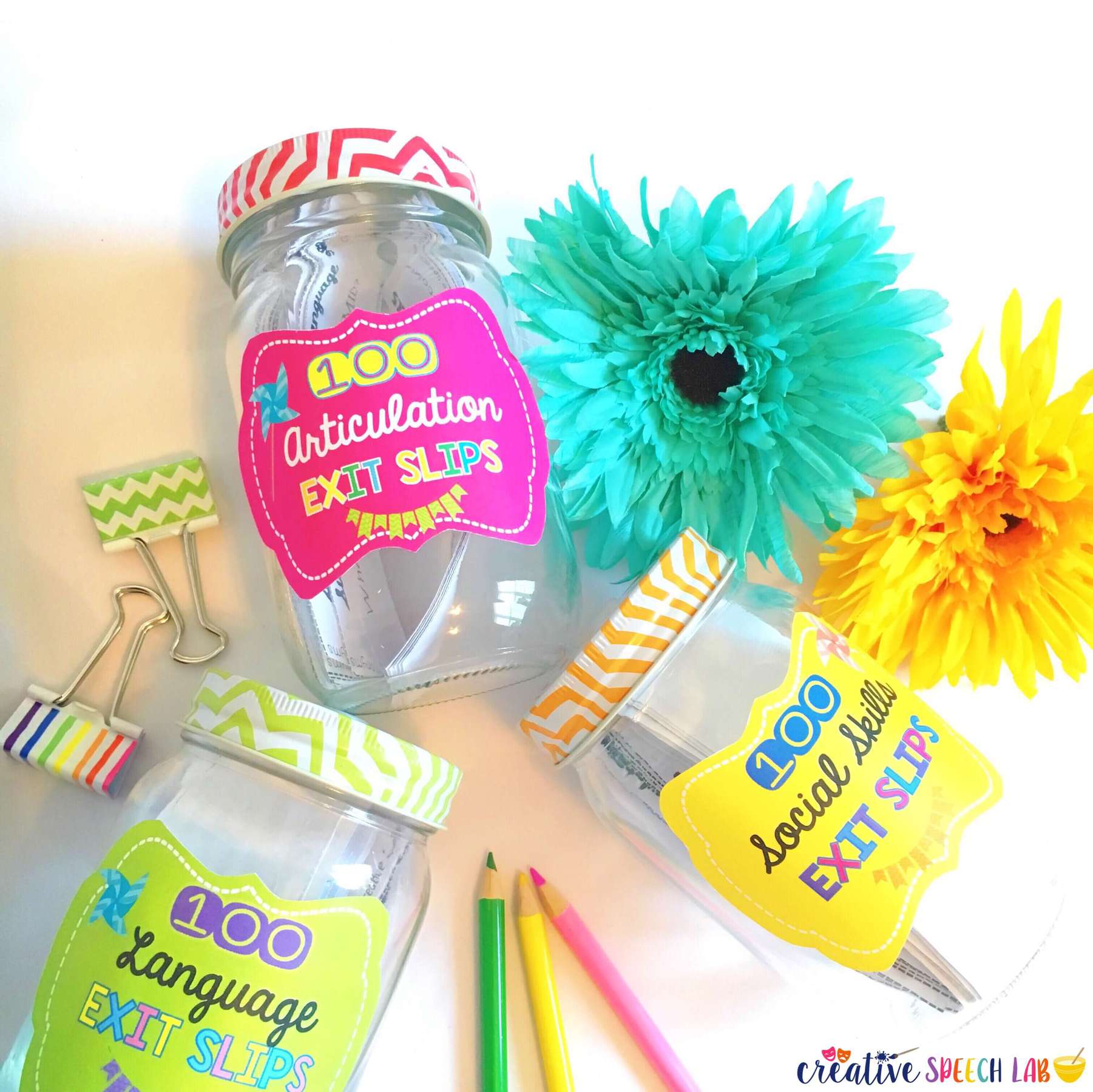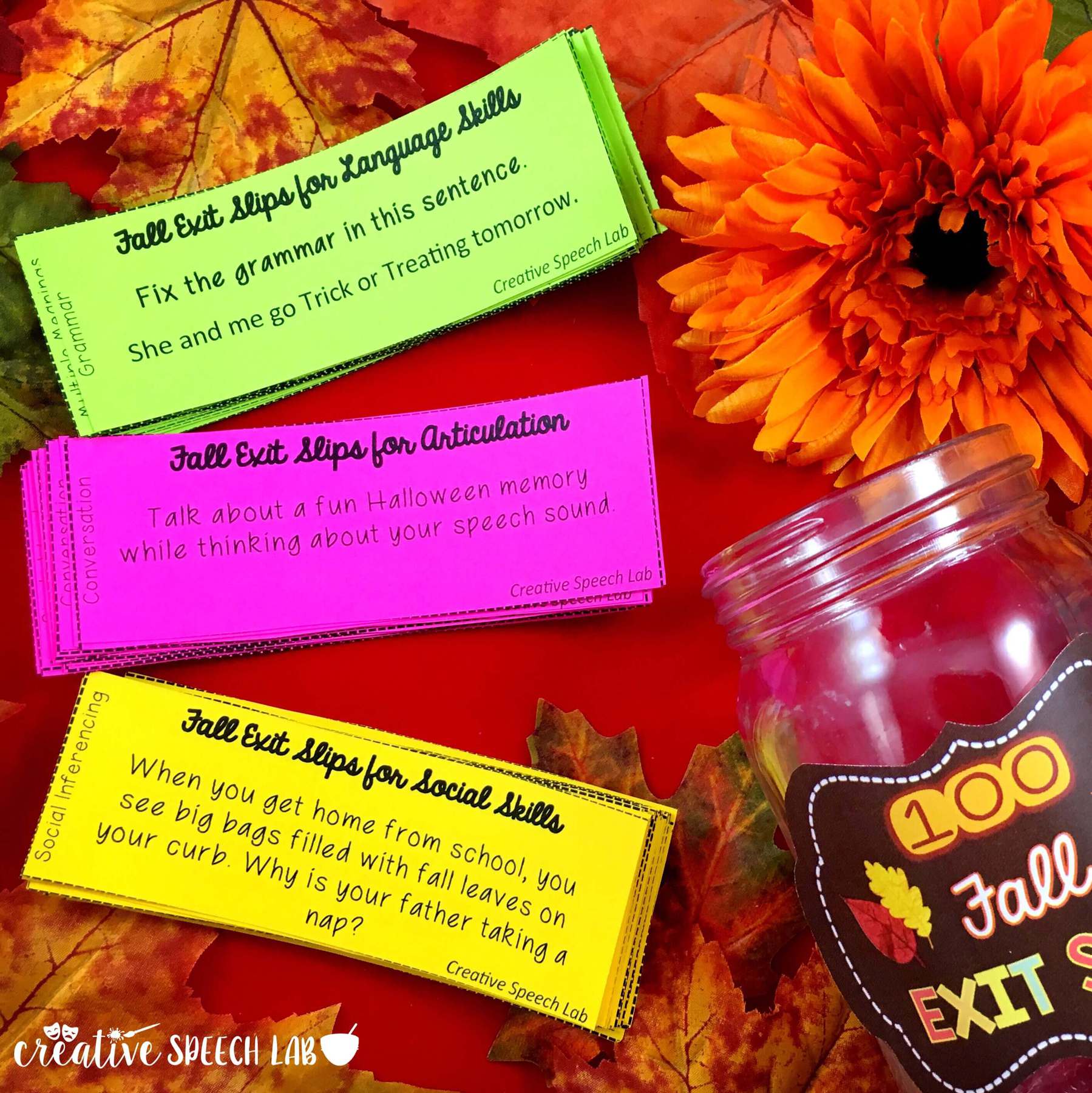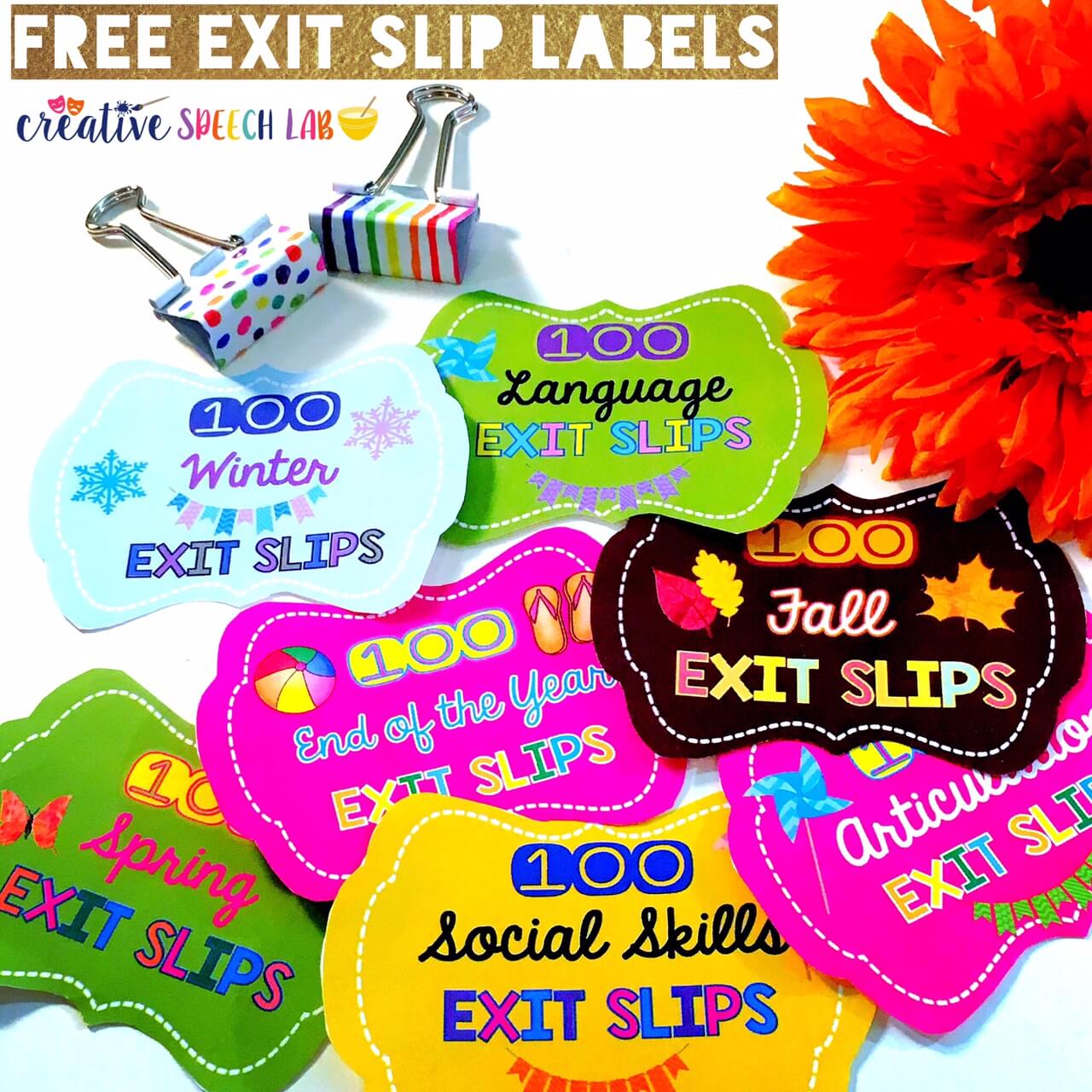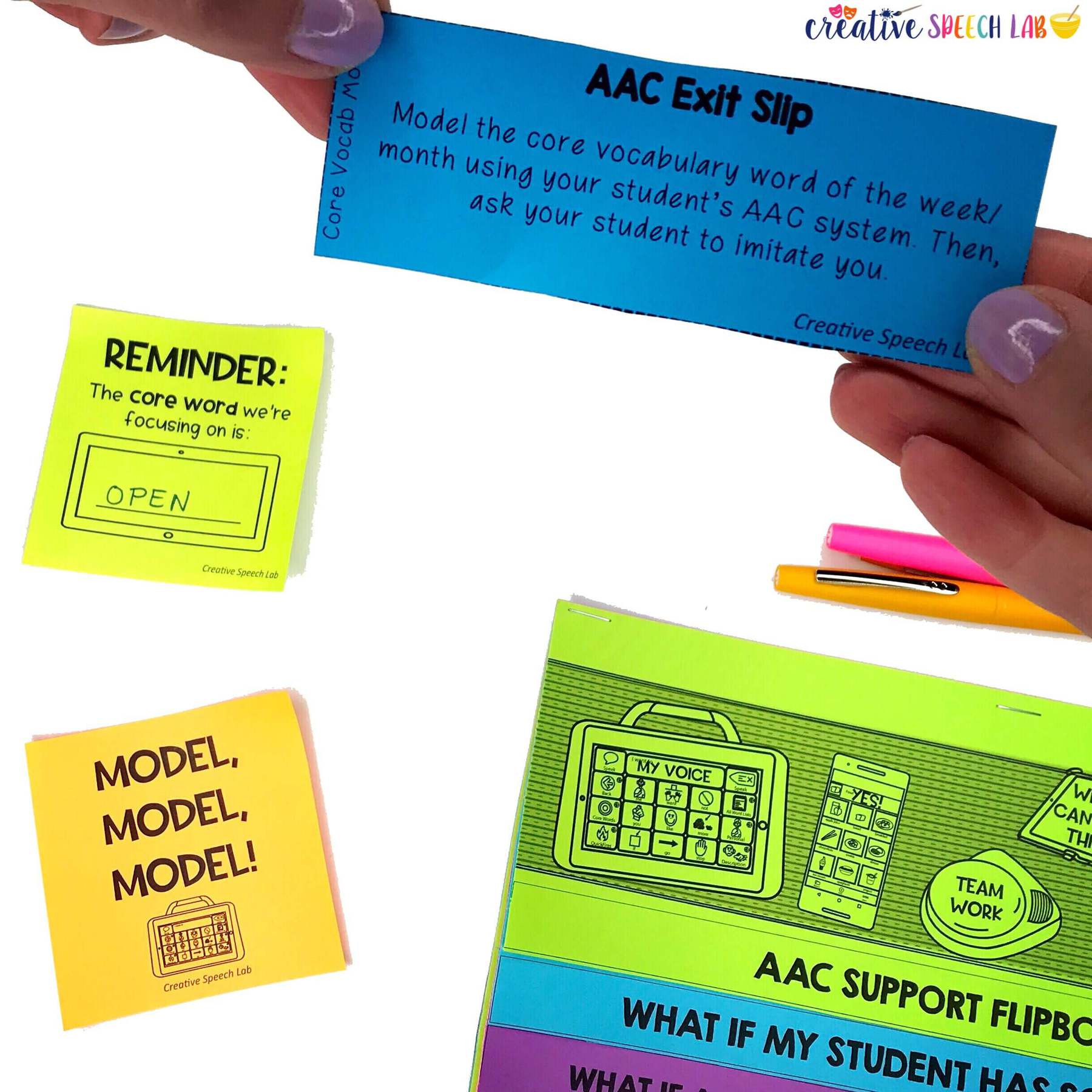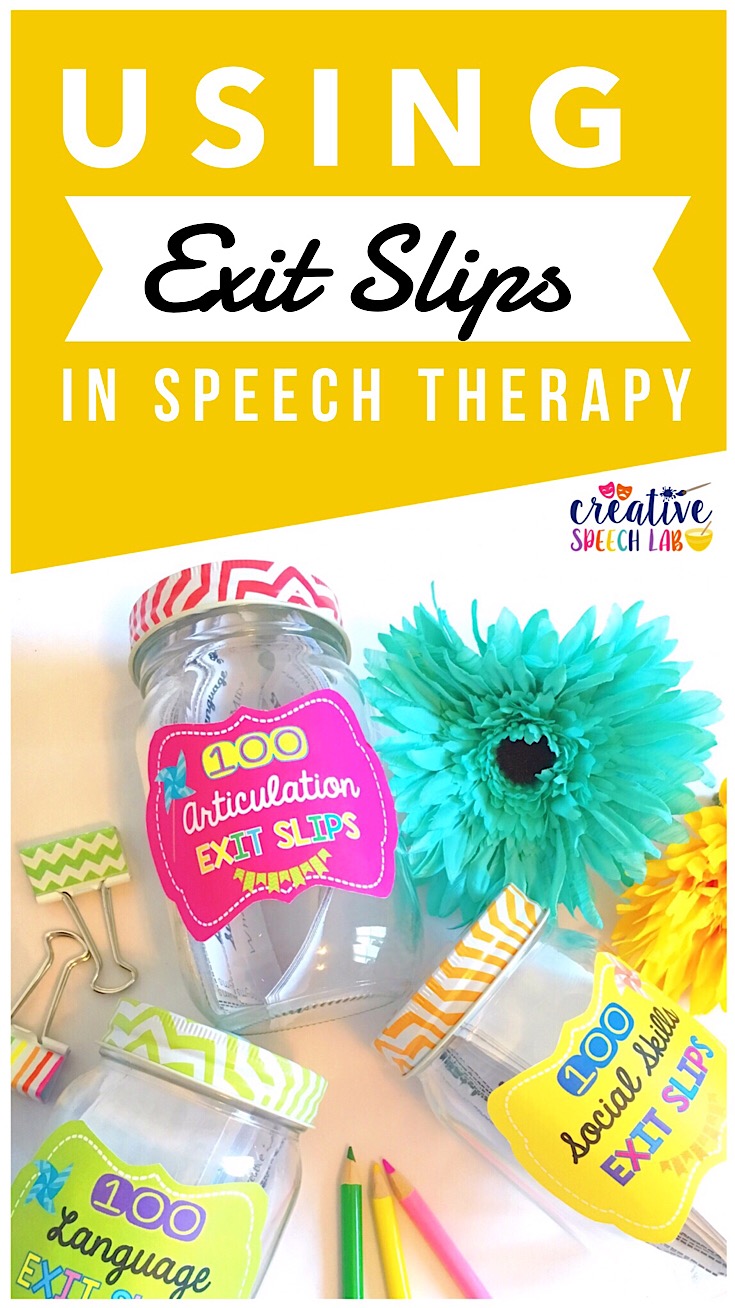Time for some real talk. I used to feel a bit overwhelmed by these three words: Evidence-Based Practice. (Am I the only one)?
Oddly enough, the simple act of making my own exit slips shifted my mindset. Why? Because I realized EBP doesn’t have to be overwhelming.
When I started using this easy, research-based routine AND my students liked it, I honestly felt a sense of pride! (I never thought journal articles would make me feel creative but they sometimes do)!
By the end of this blog post, my goal is for you to feel the same way!
First of all, for those of you who are new to exit slips…
What is an exit slip?
An exit slip or exit ticket is a piece of paper with a question on it that a student grabs before exiting the room. It provides a quick and easy way to reinforce the skills being taught.
What evidence supports the use of exit slips?
There is research supporting the premise that lessons are the most effective in terms of helping students achieve their learning goals when they are followed by an activity in which the students reflect on the learning experience. (That was a mouthful)! (Cross, K.P., 1998).
How can I use exit slips in speech-language therapy?
Easy! Simply write some questions related to your lesson on paper strips and ask your students to answer the questions before exiting your room!
If you’d like to save yourself some serious time, grab a set of FREE exit slips at the bottom of this page!
Personally, I love dividing my exit slips by skill. Students know to grab a slip from whichever container applies that day.
(Pictured above are my 100 exit slips for articulation, language and social skills. They are all a part of a skill-based bundle).
I always try to keep my sessions fresh and exciting, and I think my students really appreciate the seasonal sets I’ve put together for them.
(Picture above are my fall, winter, spring and summer seasonal sets which are a part of my seasonal exit slip bundle).
What do I need to get started?
You really just need containers!
I enjoy using mason jars but I’ve seen others use ziplock bags taped to a door and plastic cups!
Also, if you’d like the labels I’ve used, they’re yours for free —> HERE!
Can exit slips work for everyone on my caseload?
In most cases, I’d say an absolute YES!
In fact, I’ve even created exit slips for children who use AAC. Everyone should be included, right?
In case you’re like me and want #all.the.exit.slips, I’ve created hundreds of them in this mega-bundle (which saves you 30%)!
For those of you who have tried these out, your feedback has meant the world to me. I especially enjoyed reading this:
Love these – I printed them all, and added them to cute containers attached to my bulletin boards. My kids know to grab one from the appropriate container (artic, language, or social) to answer before leaving. My principal even noted it on my evaluation! Thumbs up! Thank you!
Want to save this information? Pin it for later!
I hope this blog post made you excited by the possibility of implementing this research-based routine into your own sessions! Do you have any questions? Any experiences related to exit slips? If so, just comment below!
References:
Cross, K. P. (1998). Classroom research: Implementing the scholarship of teaching. In T. Angelo (Ed.),Classroom assessment and research: An update on uses, approaches, and research findings (pp. 5–12). San Francisco:
Jossey-Bass; and Ross, J. A., Hogaboam-Gray, A., & Rolheiser, C. (2002). Student self-evaluation in grade 5–6 mathematics: Effects on problem-solving achievement. Educational Assessment, 8(1), 43–59.

